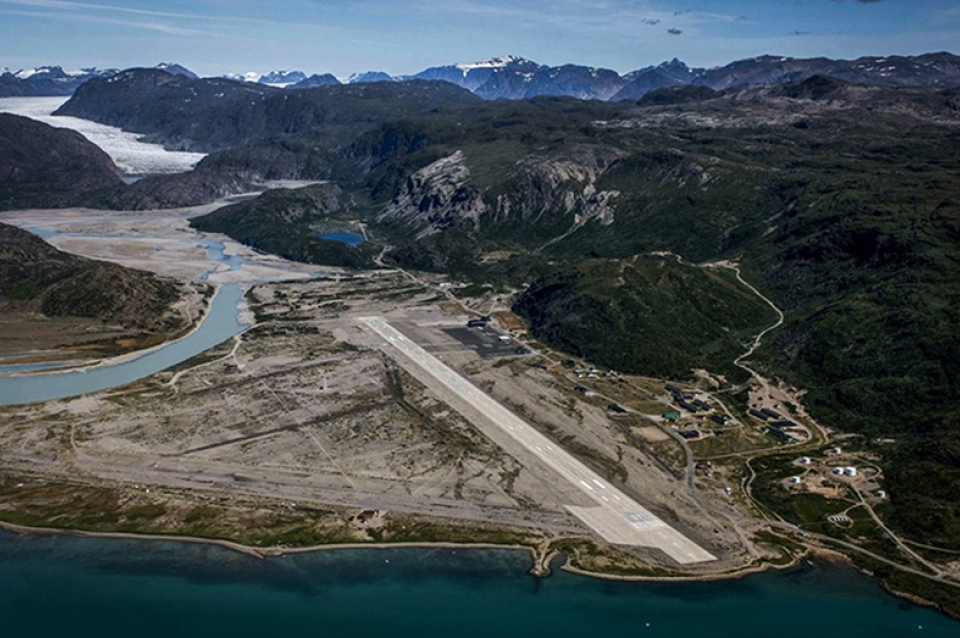April 21, 2020
Dual MLA/MArch Student Receives Second Prize from The Avery Review

Aerial view of Narsarsuaq, Greenland, showing the airstrip, the treeless landscape, and the beginning of the ice cap.
Stuart Weitzman School of Design
102 Meyerson Hall
210 South 34th Street
Philadelphia, PA 19104

Aerial view of Narsarsuaq, Greenland, showing the airstrip, the treeless landscape, and the beginning of the ice cap.
Dual MLA/MArch student, James Billingsley receives second prize in The Avery Review's Essay Prize competition. In his essay, “An Arboretum at the End of an Epoch,” Billingsley composes an alternative portrait of Greenland that is layered, complex, diverse, and rogue.
Excerpt from his piece:
1. An Icy Palimpsest
As a physical place, a country, a society, and, most of all, a complex symbol of planetary phenomena, Greenland is an object of fascination for many in the relative south. Environmental news is full of dire pronouncements about the accelerating melting of the Greenland ice sheet.1 Enormous ice loss (400 million acres! 684,000 cubic miles! A trillion tons!) and its cataclysmic imagined consequences—including the disruption of North Atlantic currents and a possible six-meter sea level rise (following total melting)—contribute to a popular media portrayal of the island as a sort of boreal Sword of Damocles hanging just above Canada.2 In 2016, the Washington Post declared, “It’s no news that Greenland is in serious trouble.”3
But what does this really mean? Unlike certain small island nations in the Global South, Greenland is in no danger of vanishing beneath the waves (in fact, it may see a relative sea level decline due to post-glacial rebound), and the chaotic weather events spurred by warmer seas make their severest impacts far to the south.4 In this usage, “Greenland” serves as a synecdoche for the ice sheet itself—where no one lives, and where melting is of unclear concern for Greenlanders. The Western identification of the country with its ice sheet is as old as its association with the legendary frozen island of Ultima Thule, reaching as far back as the ninth-century Norse colonization of Iceland.5 In this tradition, Greenland figures as a “constructed” wilderness as understood by the landscape historian William Cronon. This notion of the ice sheet as a prosthetic, even if useful for planetary systems science in general, still reduces the place of Greenland to just one component of an abstract “cryosphere.” This denial of Greenland’s subjectivity is the modus operandi of what Peter Marshall deems “shallow environmentalism”: reducing it to an object for “providing free goods and services for our well-being and for our life-support systems.”6 James Lovelock himself writes in The Revenge of Gaia that “Gaia may suffer from the unfreezing of the Arctic basin and Greenland,” again emphasizing that the ice sheet’s melting is something that happens to the rest of the world.7
The full essay is available here: The Avery Review: "An Arboretum at the End of an Epoch."